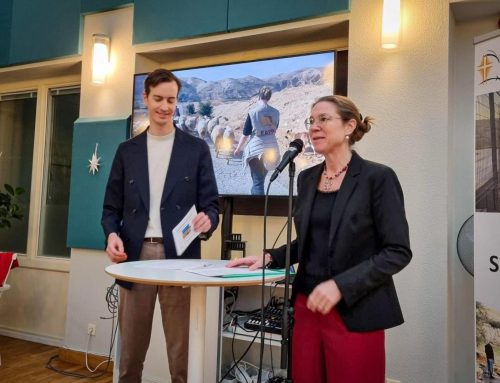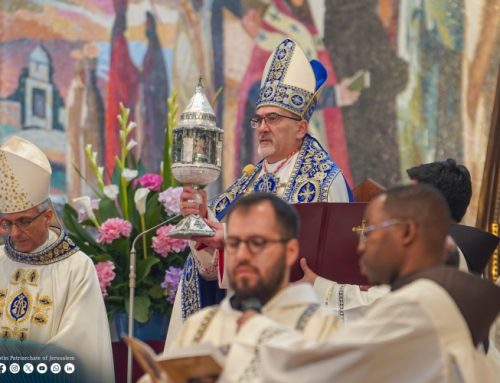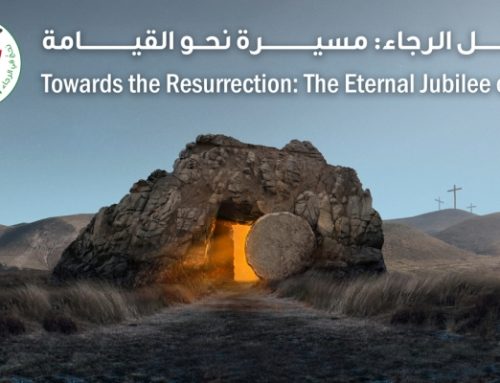With the beginning of November the academic year of the Studium Biblicum Franciscanum (SBF) officially begun. The SBF is the scientific institution for research and academic teaching of the Holy Scriptures and archeologyof the biblical Places of the Franciscan friars of the Custody of the Holy Land.
For several years now, precisely since 2013, thanks to a fruitful collaboration between the General Library of the Custody and its director, Friar Lionel Goh, the CRELEB of the Catholic University of the Sacred Heart of Milan and ATS pro Terra Sancta, the start of the season academics is made even more solemn by the inauguration of an exhibition of ancient books. The annual exhibition is part of the broader and more detailed project supported by ATS pro Terra Sancta called “Books, bridges of peace”; aimed at enhancing and preserving the library heritage of the Franciscan libraries in Jerusalem.
As the Custodial Vicar Fra Dobromir Jasztal points out during the inauguration on November 6th, the purpose of these exhibitions is twofold: on the one hand to make known to the public, and even to the friars themselves, the richness of the book material of the order, on the other hand it can be a way to search for dialogue between scholars coming from different religious, cultural and linguistic experiences. The end of all the editions that have followed one another so far, fully in line with the mission of the Franciscan friars in this land, is even more evident this year: the exhibition choice that has guided prof. Edoardo Barbieri, head of the project, and his students at the Catholic University of Milan, wanted to compare different languages, traditions and cultures in the relationship with the Holy Bible.
The exhibition, which can be visited from 6 to 8 November in the hall of the Custodial Curia, is entitled “Bible on the move“: traditions and translations of the Holy Scriptures “and presents, through a wise use of the material available in the General Library of the Custody, the different facies assumed by the sacred text over the centuries. The forty or so exposed Bibles change forms and scriptures, present languages and different uses: scrolls, codices, manuscripts, pocket bibles, precious illustrated editions, such as the rare Italian Bible of 1493 edited by the monk Niccolò Malerbi, gospels and commentaries.
The section dedicated to the Hebrew language is an example of this “movement”: we pass from a scroll of parchment written in Hebrew containing the book of Esther, read during the Jewish festivity of Purim, to a manuscript edition in Samaritan, to a Bible in Hebrew printed by a rich Catholic merchant in Venice, up to a precious sixteenth-century print of the Hebrew text with paraphrase in Aramaic. And many other examples could be done to illustrate the variety and uniqueness of all the present works.
The exhibition catalog, divided into seven sections, the result of the study and work of several collaborators, is now available, thanks to the contribution of ATS pro Terra Sancta, in paper and digital versions to make the material accessible to everyone. In fact, the message of the sacred scriptures is universal and this collection is tangible proof of it; as Professor Barbieri recalls during the presentation: “The text does not change in its essence, but in its presence, it remains the same, it is always new because it tells the story of Salvation to peoples from all over the world”
Source: Pro Terra Sancta






